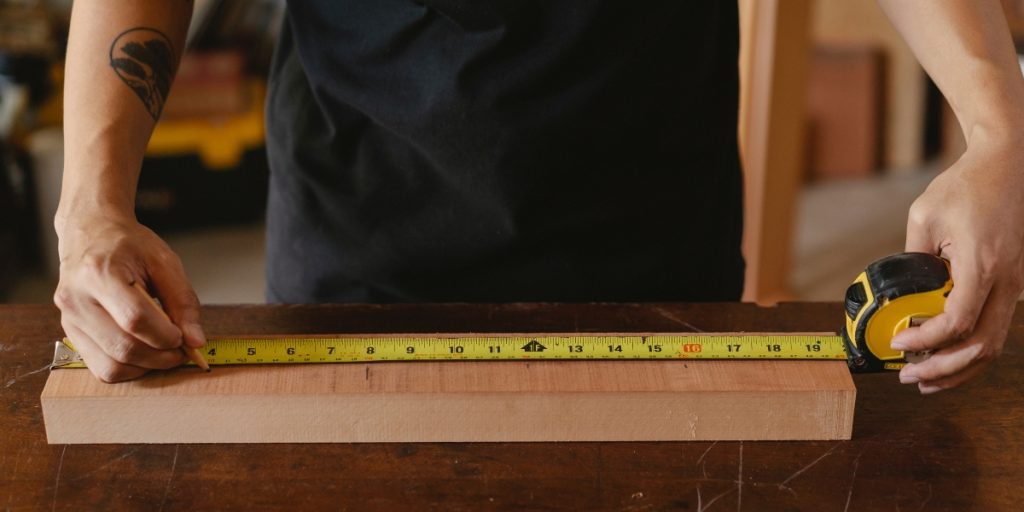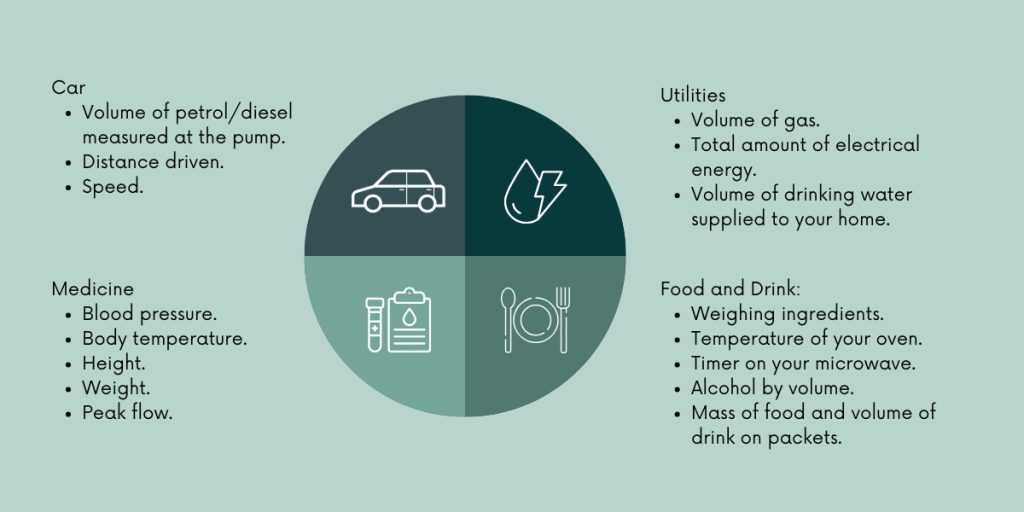- Measurements form an important part of modern society, they are omnipresent in our daily lives and generally widely trusted.
- Biodiversity measurements, on the other hand, are relatively new and are in the process of building that trust.
- Qualification of measurement uncertainty (using methodologies borrowed from metrology) constitutes a crucial part of building trust in measurements.
- At Carbon Rewild we actively qualify our measurement uncertainty, get in contact if you want to discuss the process in detail.
Measurements are an unseen yet important part of our daily lives. We frequently come into contact with them yet rarely question them. In a word we trust them.
Everything from electricity meters to car speedometers, blood pressure monitors to weighing scales, rarely does a day go by without using a form of measurement. Trust in these measurements also makes our lives much easier, imagine every time you bought a bag of pasta you questioned the weight printed on the side of the package.
Trust in these measurements has been hard won. Over time these measurement processes have been refined and improved, as well as being codified and regulated.
At Carbon Rewild we recognise that new scalable biodiversity measurement methodologies are going through a similar cycle. That is not to say that there are not already recognised and regulated ways for an individual ecologist to measure breeding birds, insect populations, bat roosts etc. But the new generation of cheaper and scalable technologies, such as passive bioacoustics using AI-analysis, are in need of building trust. Once this trust has been earned then the full benefit of cheap scalable biodiversity monitoring can be felt.
Luckily there already exists a whole scientific field devoted to measurement science: Metrology (NB this is not the same as meteorology, the study of weather).
Metrology and Everyday Measurements
According to the International Bureau of Weights and Measures, metrology is “the science of measurement, embracing both experimental and theoretical determinations at any level of uncertainty in any field of science and technology,” [1]. The keyword here is uncertainty.
Society has relied on measurements for thousands of years to help us build and buy, assess and analyse everything around us. For example:
- The process of building a house requires hundreds of measurements.
- Buying a 1kg of apples relies on knowing how much 1kg is.
- Medical check ups involve many different measurements.
But how good do these measurements need to be?
When buying a 1kg of apples you are not expecting to get exactly 1kg of apples (i.e. 1.0000000000000…). If you bought 1.1kg you would not mind, equally if you got 0.95kg, you probably would not notice or complain. But if the scales have a very wide uncertainty and the grocer handed you 0.5kg of apples, you would notice and say something.
Similarly if you are creating a new 2m long garden bed, do you mind if your new bed is 195cm or 2.05cm long? Those five centimetres probably do not make much of a difference in your garden. But if you are installing a 2m long kitchen counter top, then you need millimetre accuracy (1.999m to 2.001m).

What we are looking for from measurements in our daily life are suitable measurements. In theory every measurement could be as accurate and precise as physically possible, but that would be time-consuming, unnecessary, and costly.
We can quantify a measurement’s suitability by finding a value of measurement uncertainty. In general terms, the lower the uncertainty the ‘better’ the measurement. But that usually entails greater cost and complexity. So like many things it is a trade off.
But there is also a more important conclusion here: No measurement is perfect. All measurements have a level of uncertainty that needs to be clearly stated. (And that includes ones produced with AI and/or human verification).
And that includes biodiversity metrics and measurements. Without the ability to judge the uncertainty these measurements risk become meaningless.
Building Trust in Measurements
So why do we care about measurement uncertainty? It comes back to trust.
When the grocer weighs out 1kg of apples, our society places its trust in those weighing scales providing a ‘correct enough’ value.
Apples are a spurious example to be honest, but it is only the tip of the iceberg. Many aspects of daily life rely on a measured value, which we take for granted:

All the above require different levels of measurement uncertainty to be useful. They also will need to meet specific measurement uncertainties to meet legal requirements as well.
For example, in the UK a fuel pump must dispense fuel with an error of -0.5% to +1% [2]. So if you buy 50 litres of petrol you can legally receive somewhere between 49.75 litres and 50.5 litres.
Measurement Uncertainty and Biodiversity Metrology
How does measurement uncertainty apply to biodiversity measurement? Can it really be as simple as weighting apples?
Biodiversity measurements using low cost, scalable technology is still in its infancy. And following the tried and tested route of metrology is how Carbon Rewild proposes to elevate these new measurements to be trusted pillars of society.
As a result, we have (and continue to) quantify our measurements’ uncertainty. For example, using many years of data we can calculate the measurement uncertainty of bird species richness and bat species richness. Please contact us directly to find out more information or wait for more blogs to appear on this topic.
The benefits of using measurement uncertainty for biodiversity measurements are similar to the general benefits above but is worth exploring them in more detail.
1. Assessing If Change Has Really Occurred
The primary reason for many people who measure biodiversity is to assess whether an improvement or gain has been made. Improvement or gain are vague terms but doubly so when measuring biodiversity.
The multidimensional nature of biodiversity metrics means that several different measurements are combined into one value/metric. However, change in the individual measurements (e.g. species richness) can demonstrate changes in biodiversity.
But how can we be confident if change has genuinely occurred? If species richness goes from 25 to 28 has it definitely changed? It depends on the uncertainty. If the measurements have a +/- 20% error then an increase cannot be assured:
- Measurement 1: 20-30 species
- Measurement 2: 23-33 species
There is a lot of overlap between these two measurements. However, if the uncertainty is +/- 4% then an increase is much more assured:
- Measurement 1: 24-26 species
- Measurement 2: 27-29 species
The measurement uncertainties do not overlap therefore a change has been observed.
This is hugely important for biodiversity net gain (BNG) and various other uplift calculations.
2. Underpinning Financial Confidence
Much like buying petrol or diesel, if someone is to invest in nature-based solutions, biodiversity credits, or BNG then understanding the quantity they are purchasing is crucial.
No one wants to think they are buying 1kg +/-50% of apples only to risk being given 0.5kg, and it will be exactly the same with biodiversity products.
Furthermore, as this field matures then these new measurement processes can be codified, standardised, and regulated in more traditional ways. Thereby enabling an even wider adoption.
3. Varying the Cost of Measurement
The cost of surveying land risks being a large proportion of the costs of running a conservation project. This is a large proportion of why new cheaper and scalable technologies have been developed to help bring down costs.
By understanding the measurement uncertainties of different methodologies it allows users to select suitable technologies based on their costs and suitability.
Generally speaking the lower the uncertainty the higher the costs. But by understanding the needs of their land and the metrological implications of different technologies a fair trade off can be achieved.
4. Developing New Metrics With Improved Uncertainty
Importantly for the development of new technologies measurement uncertainty is a barometer of success. It allows individuals and organisations to benchmark their ideas during the development process.
For example, by undertaking the process of calculating measurement uncertainty Carbon Rewild has identified that flyovers (i.e. birds which are just passing over a site) contribute significantly to the measurement uncertainty of the species richness measurement. Thereby introducing extra analysis steps to remove these species a more precise measure of biodiversity can be attained.
But as a wider point – and something that has been previously stated by others – biodiversity metrics need to take uncertainty into account at all stages, by all measurement methods used [3].
Conclusion
Metrology is the scientific study of measurement and is a pillar of modern society.
Carbon Rewild is harnessing the methods used in metrology to help build trust in biodiversity measurements. This involves calculating the measurement uncertainty of the results of their bioacoustic measurement outcomes.
Measurement uncertainty has many benefits including:
- Easier to assess if genuine changes have occurred.
- It provides a legal basis for a measurement, especially for financial transactions.
- A way of accessing the quality of a measurement methodology.
Combine these things and you have a good starting point to build trust in a measurement.
Next Steps and Get In Contact
This blog is the first in a series that will provide further information on measurement uncertainty and how Carbon Rewild is attacking this issue.
We understand that we are not an island though, so your thoughts and feedback are welcome. Please get in touch if you would like to know more or fancy collaborating on the ideas mentioned above.
References
- BIPM, Worldwide metrology: What is metrology? https://www.bipm.org/en/worldwide-metrology/#metrology
- Trading Standards, Hampshire County Council, 2019, https://www.hants.gov.uk/business/tradingstandards/news/filling-station
- Carbon Pulse, INTERVIEW: Most biodiversity credit methodologies fail to address uncertainty, 2024, https://carbon-pulse.com/308557/

